Vietnam, a country with rich biodiversity
Viet Nam is ranked 16th among the world’s most biodiverse countries and is one of the ten richest centers of biodiversity in the world. Taking into account that biodiversity is an important contributor to economic development, how Viet Nam is doing in reserving this generous asset from the nature?
Rich biodiversity in both ecosystem and in species.
Viet Nam is situated in the eastern part of the Indochina Peninsula and stretches over 15 latitudes (1,650 km). This is one of countries which have the richest biodiversity in the world with several types of forests, streams, lagoons, and coral reefs.
With regards to the terrestrial ecosystems, there are more than 15,900 species of flora (10% among them are endemic species) and approximately 10,000 species of fauna (among them more than 100 endemic species of birds and 78 endemic species of mammals) have been identified, while more than 3,000 aquatic species have been identified in the interior wetlands.
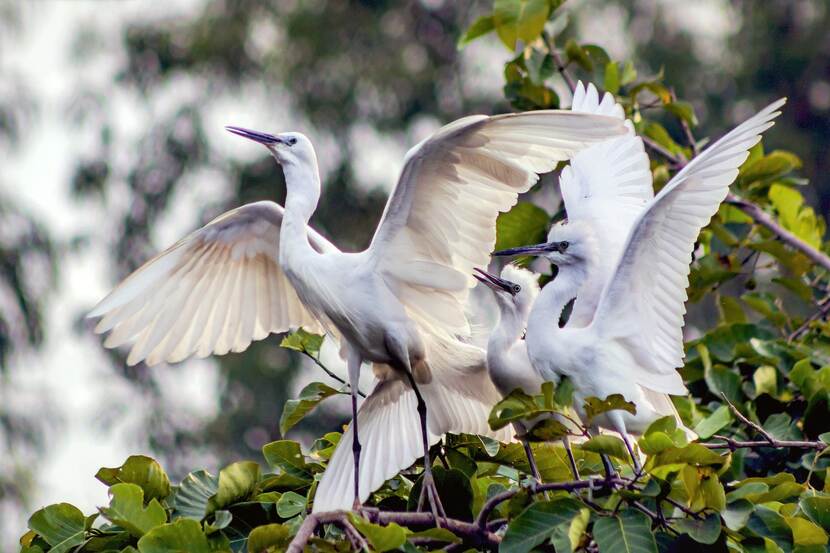
The tropical marine area has more than 20 typical ecosystems and is home to more than 11,000 marine species. It’s involved 2,458 species of fish, 653 species of seaweeds; 657 species of zooplankton, 537 species of phytoplankton, 94 mangrove plant species and 225 species of shrimp.
Biodiversity resources have contributed to sustainable livelihoods over many generations through the provision of food security and health care, especially for local people living in remote areas who are directly dependent on resource exploitation.
National Parks
Aiming at protecting rare and endangered species from deforestation, negative impacts of urbanization and climate changes, system of national parks in Viet Nam has been widened and developed.
The first national park of Viet Nam - Cuc Phuong National Park, was established in 1966 and currently, Viet Nam now has 34 national parks with total area of more than 10 thousands square kilometers (accounted for 3% of territory on the mainland).
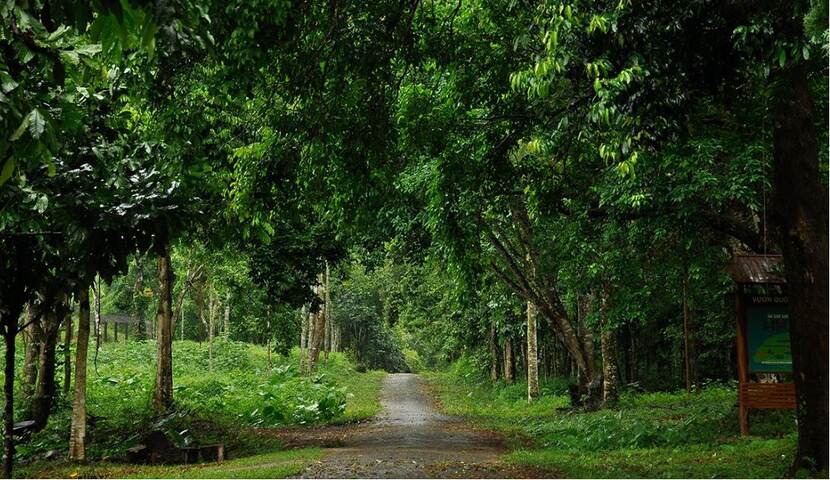
Among them, Phong Nha – Ke Bang National Park was titled by UNESCO as the World Natural Heritage Site and Bai Tu Long National Park was recognized as a part of the World Natural Heritage Site – Halong Bay. Moreover, there are 8 national parks listed in the list of International Biosphere Reservation by UNESCO and 4 other were declared as ASEAN’s Heritage Parks.
Pressure on Vietnam’s biodiversity
Viet Nam, unfortunately faces the risks of biodiversity degradation as many parts of the world, with an increasing number of threatened species and degraded ecosystems of forests, wetlands, marine areas, among other issues.
In particular, 21% of mammals, 6.5% of birds, 19% of reptiles, 24% of amphibians, 38% of fish, and 2.5% of plants are listed as threatened species (WWF & BCA, “Assessing Biodiversity in Viet Nam”, 2021) . The live coral cover of coral reefs in coastal areas is decreasing rapidly over time. The area of seagrass has decreased by 45.4% and the average annual reduction rate was 4.4% (MONRE, National Ecosystem Assessment report, 2021).
Over the past 20 years, forest areas have been the most affected with more than 10,544 square kilometers lost to agriculture. Around 2.8 million hectares of natural forest have also been lost due to land conversion for other commercial crops. While the overall forest coverage is reported to remain at roughly 42%, deforestation and forest degradation are still rampant, with biodiversity-rich natural forests being replaced with monoculture planted forests that have little to no biodiversity values.
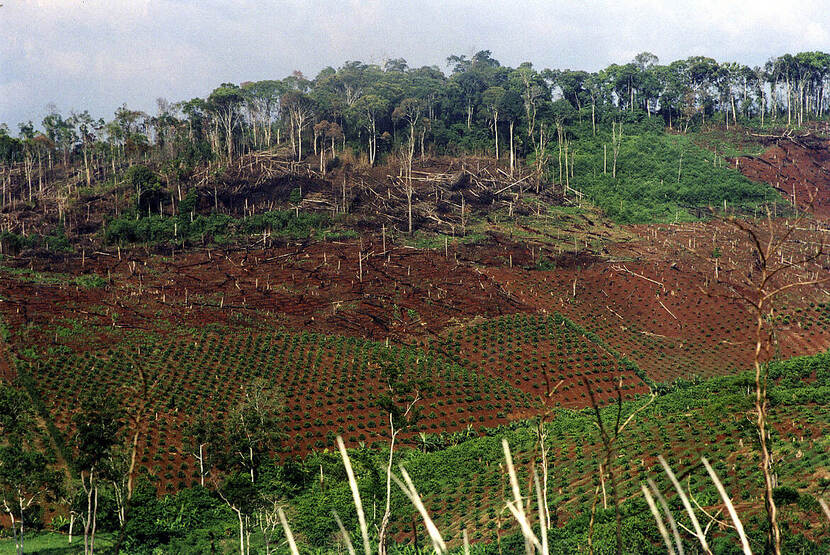
Threats to biodiversity in Viet Nam include population growth and consequent consumption growth, overexploitation of natural resources, characterized by illegal exploitation of timber and non-forest timber products, unstainable fishing and illegal wildlife hunting and trade. Other threats include changes in land use, characterized by massive infrastructure development, extension of land for agricultural and industrial plantations, introduction of alien species and climate change.
Regarding freshwater ecosystems, overexploitation and mega infrastructure projects (e.g. construction of dams for irrigation and hydropower) have led to the loss of habitats of many aquatic species and to dysfunctional ecological processes in lagoons, resulting in charges in water circulation and facilitating saltwater intrusion into rivers. Most of marine ecosystems are degrading seriously due to severe pollution from waste and oil spills, unsustainable fisheries management that leads to the overexploitation of aquatic products in many regions.
Finally, being one of the country’s most vulnerable to climate change puts more pressure on the ecosystems in Viet Nam and hinders the national efforts in reversing the biodiversity degradation trend. Temperature rise makes bad impact on ecosystems and their population structure as well as causes more forest fires and extreme weathers.
Policy review and connection to economic sectors
In the last two decade, biodiversity conservation has been given high attention by the Vietnamese Government. Viet Nam is member of international conventions and protocols Convention on Biological Diversity (COP15), World Heritage Convention, Ramsar Convention, CITES, Cartagena Protocol on Biosafety, United Nations Framework Convention on Climate Change and the Convention to Combat Desertification.
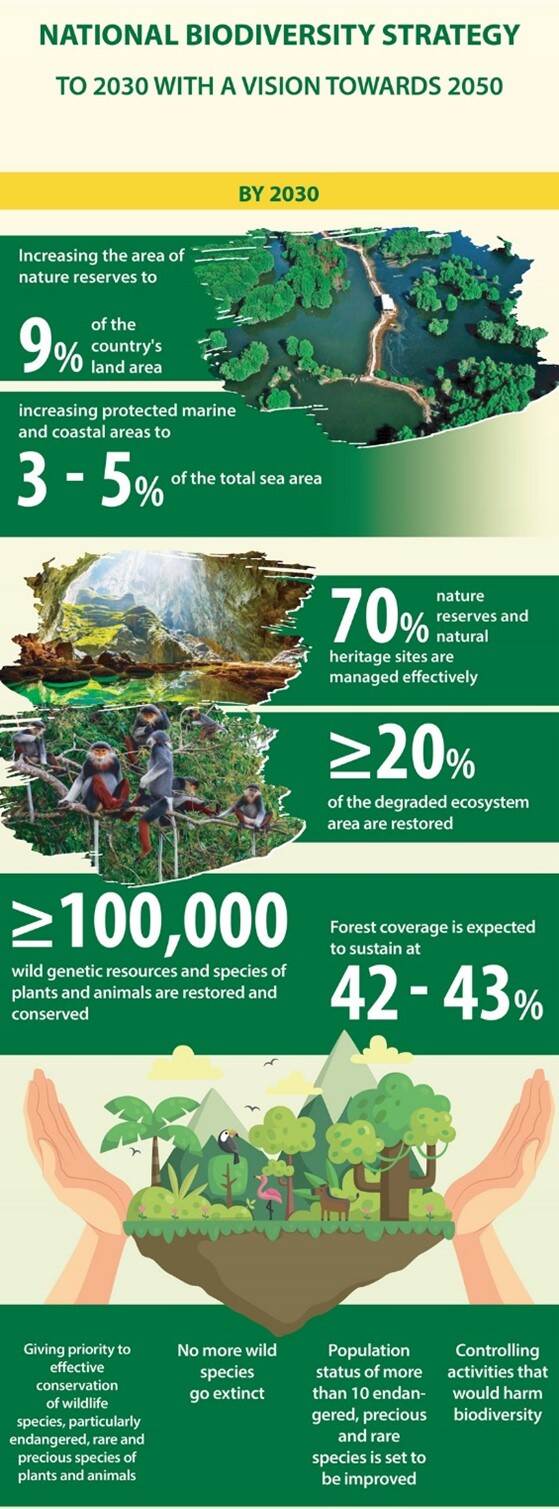
To fulfill the international commitment, the Government of Viet Nam has developed a relatively comprehensive legal framework for environmental protection and biodiversity conservation including the Law on Biodiversity (2008) and revised Law on Environment Protection (2020), however the concept of Nature’s services are still not institutionalized in current legal frameworks and limitedly mentioned in some policies. It is worth to note that the state management responsibilities for biodiversity, environmental protection, climate change and biodiversity conservation are spread across all related ministries namely the Ministry of Natural Resources and Environment (MONRE), the Vietnam Environment Administration (VEA), the Ministry of Agricultural and Rural Development (MARD), the Ministry of Industry and Trade (MOIT) etc. The facts show that the enforcement of the laws and sub-laws is still low due to many reasons, including unclear division of responsibilities among ministries and agencies, low-deterrence penalty schemes, insufficient capacities and low commitment on the part of central and local decision-makers.
The two most relevant National Strategies can be a Green Growth Strategy 2021-2030 vision to 2050 (2021) and a National Strategy on Biodiversity for 2030 with a Vision for 2050 (2022). The first one is an important policy document for Viet Nam’s economic growth and sustainable development, with specific goals related to greenhouse gas emission reductions while the later sets goals to increase the area of natural ecosystems that can be protected and restored and to develop the economy and society toward achieving a green economy and responding to climate change.
However, there is still much need to be done in implementation of these strategies. One of the key is mainstreaming biodiversity conservation into economic sectors in a systematic way. Responsible production, taking into account biodiversity and environment protection should the future trend for a sustainable economy in Viet Nam. Key sectors can be named as Forestry (sustainable plantation, logging and NTFP collection), Agriculture (subsistence agriculture), Fisheries (reservation of mangrove forest and its habitants) and Tourism (reservation of environment and biodiversity).
The Netherlands support to Viet Nam in biodiversity conservation and wildlife protection
The Netherlands Embassy in Hanoi has been supporting the nature and biodiversity conservation in Vietnam in the last decades with number of programs on wetland conservation, protection of national parks and nature reserve areas, non-timber forest product development etc. Nowadays, the Netherlands supports Viet Nam in nature and bio-diversity conservation mainly on CITES implementation via small fundings from the Netherlands Ministry of Agriculture, Nature and Food Quality. Our activities focused on public education and raising awareness on wildlife protection for example beers, tigers, elephants and pangolins. In 2019, a Pangolin Education House funded by the Netherlands Embassy was constructed in Cuc Phuong National Park. The Pangolin Education House includes 3 enclosures which now holding three unreleasable pangolins who were rescued from illegal trade. The education house is initiatied and managed by Save Vietnam Wildlife (SVW). Every year Cuc Phuong National Park receives about 200,000 visitors and they organize tours especially for young pupils in cooperation with the local schools. It tells stories about the animals, screen educational videos and present information about pangolin threats, trading, the conservation efforts of SVW.
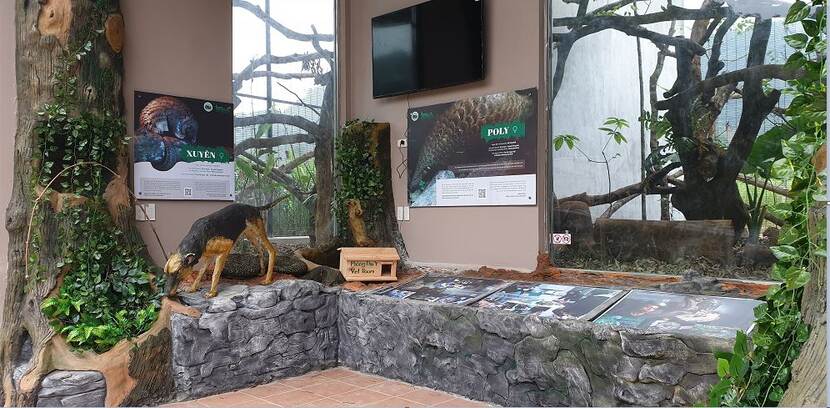
The education house is also used as place to provide training on law enforcement for government authorities and staff from other rescue centers. The house sometime receives the pangolins rescued from illegal trade and provide them with quarantine, breeding and recovery program before they can be sent back in the wild.
Do you have any questions for the agriculture department please send an email to HAN-LNV@minbuza.nl. For the latest updates, news funding opportunities and more follow us on Twitter @AgroVietnam.